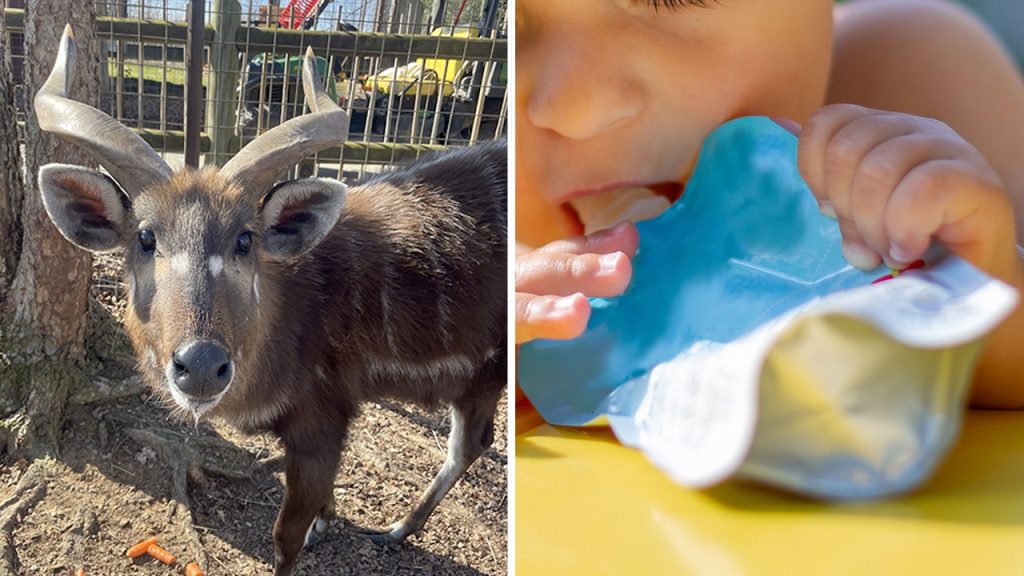Brights Zoo in Limestone, Tennessee, experienced a tragic incident when a rare sitatunga antelope named Lief choked on the cap of a squeezable snack pouch left behind by a visitor. Despite efforts by a veterinarian, the 7-year-old male antelope could not be revived. The zoo officials shared on Facebook that the reason they do not allow squeezable pouches into the zoo is because the packaging is dangerous to the animals. The colorful lid could be mistaken for food by the animals, leading to potentially fatal consequences. Brights Zoo’s rules specifically state that squeezable baby food pouches are not allowed due to animal safety concerns.
The zoo officials expressed frustration at guests who find ways to sneak in these dangerous items despite bag searches. They emphasized that rules are in place for a reason and urged visitors to follow them to prevent harm to the animals. Lief had been a resident at Brights Zoo since he was one year old and still had a lot of life ahead of him. The tragic loss of the antelope sparked a discussion among Facebook users about the importance of following rules and the potential dangers of trash getting into animal enclosures. Sitatungas are rare swamp-dwelling antelopes with long, splayed hooves that are native to Africa. The species has a lifespan of around 22 years in human care, but it is unknown in the wild.
The incident serves as a reminder of the need for visitors to be mindful of the items they bring into zoos and follow the rules set in place by the facilities to protect the animals. Brights Zoo’s rules prohibiting squeezable baby food pouches are intended to prevent such tragic incidents from occurring. The loss of Lief highlights the importance of adhering to these guidelines to ensure the safety and well-being of the animals in captivity. The zoo officials expressed their sadness over Lief’s untimely death and reiterated the dangers that seemingly harmless items can pose to the animals under their care. As a rare and unique species, the sitatunga antelope plays an important role in the conservation efforts of wildlife organizations.
Brights Zoo’s dedication to protecting its animals and providing a safe environment for both the residents and visitors is evident in their strict policies and guidelines. The tragic loss of Lief serves as a wake-up call for the public to be more mindful of the items they bring into zoos and the potential risks they may pose to the animals. By raising awareness about the dangers of certain items and enforcing strict rules, zoos can work towards preventing similar incidents from happening in the future. The impact of Lief’s death on the zoo community and the broader public underscores the need for responsible behavior when visiting animal facilities to ensure the well-being of the animals remains the top priority.













